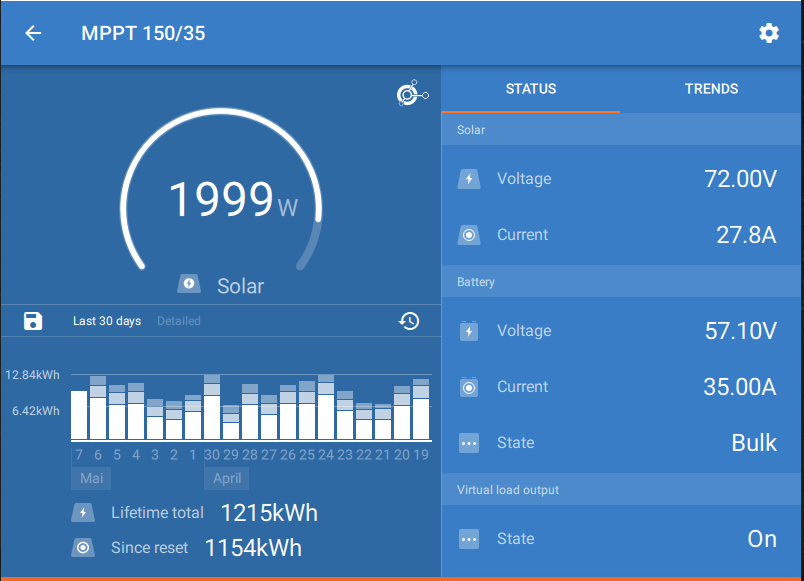I am trying to figure out the best way to wire my solar array. I will be running:
6 x 370W Trina solar panels with my Smart Solar MPPT 150/100 TR (Batteries are 24v). Photo attached of PV panel specs
Each panel has a max short circuit current rating of 11.37A. So I was thinking of running a 15A MC4 fuse for each panel. But the part I'm not sure about it how many cables I should run.
For example, Should I run smaller cables from each individual panel down to my electrical box, so I would have 12 cables (6 pos and 6 neg) running down to my electrical cabinet. (This seems like alot of cables...)
or
Should I join the panels into 3 pairs of 2 with MC4 splitters, so I would have 6 larger cables (3 pos and 3 neg) running down to my electrical cabinet
or
Another configuration?
The cable run from the furthest panel from the electrical cabinet is just under 10m. So obviously whichever way I go I need the cable to be large enough to carry the current (in this case at least 15A for one panel, due to fuse size) over that distance for however many panels are feeding it but also small enough to be soldered into an MC4 connector.
I know that in some cases people use like a junction box to join the panels, but I really don't like the idea of a box being on the roof in the weather to get moisture etc inside of it. I'd prefer them to all join in the electrical box which I am planning on doing.
Sorry for the long question. Just trying to find out the proper way to do things. If that's completely different from what I'm imagining, I'm willing to embrace it.

